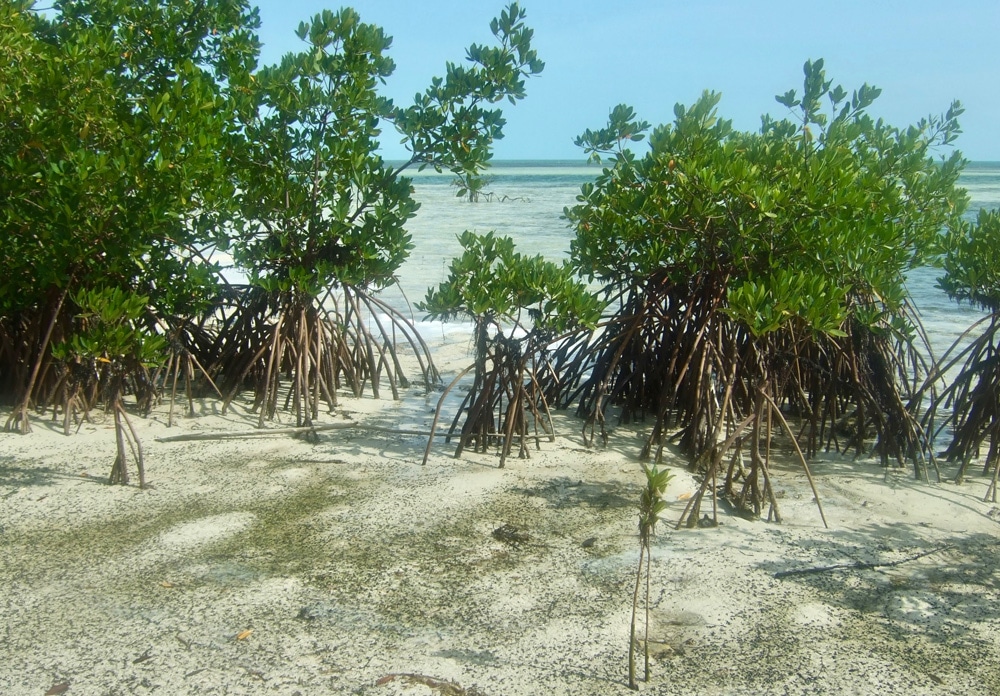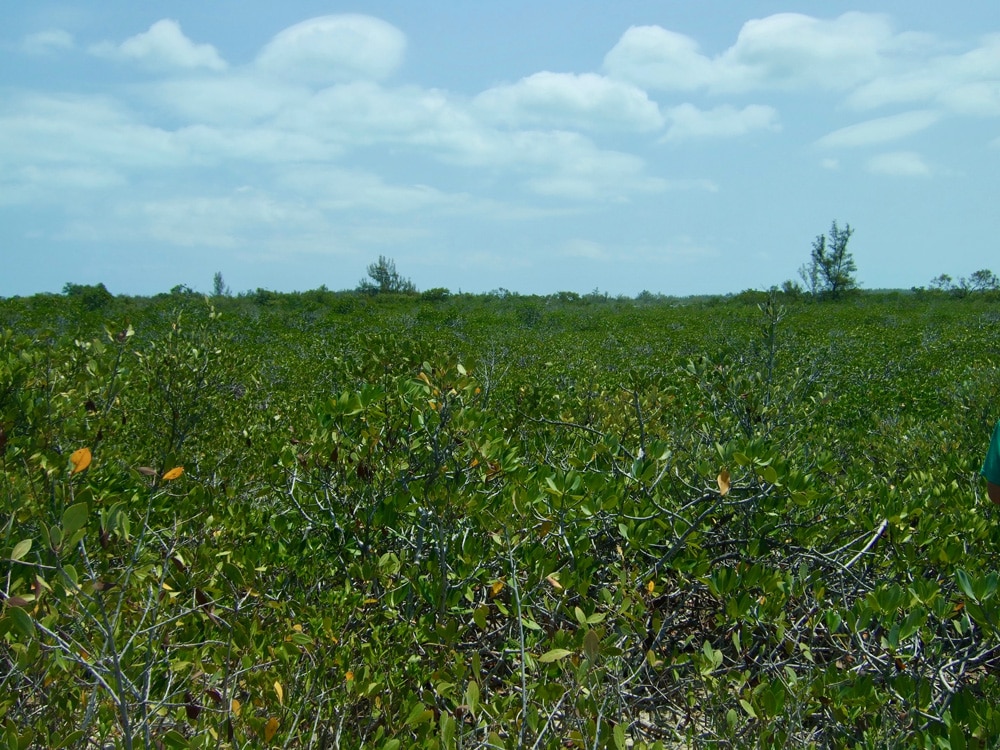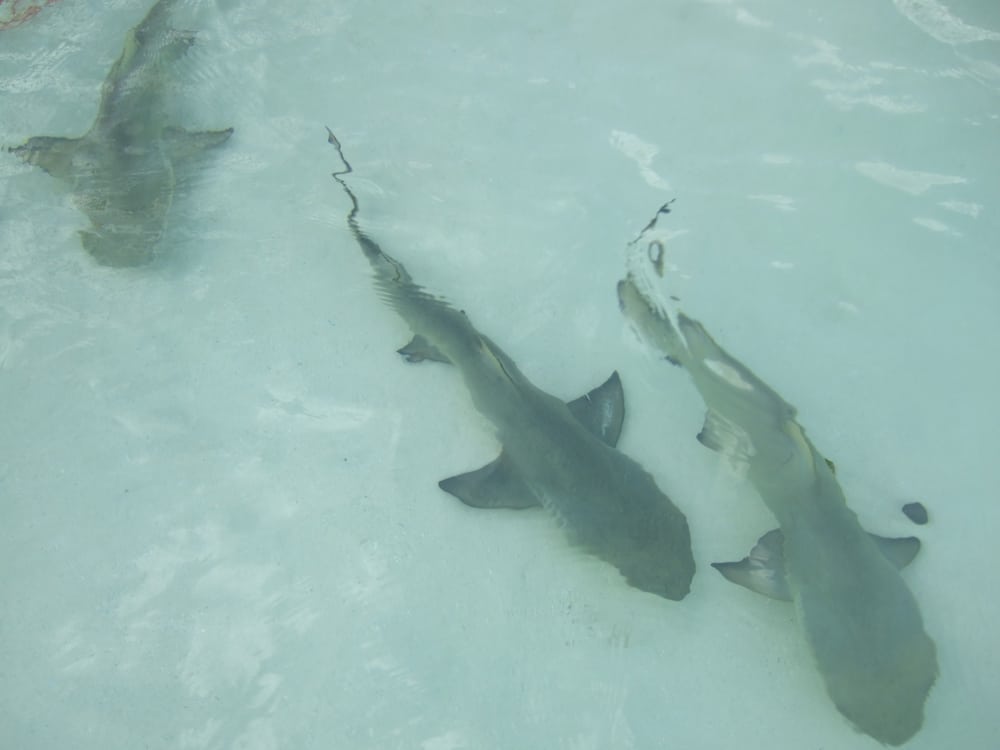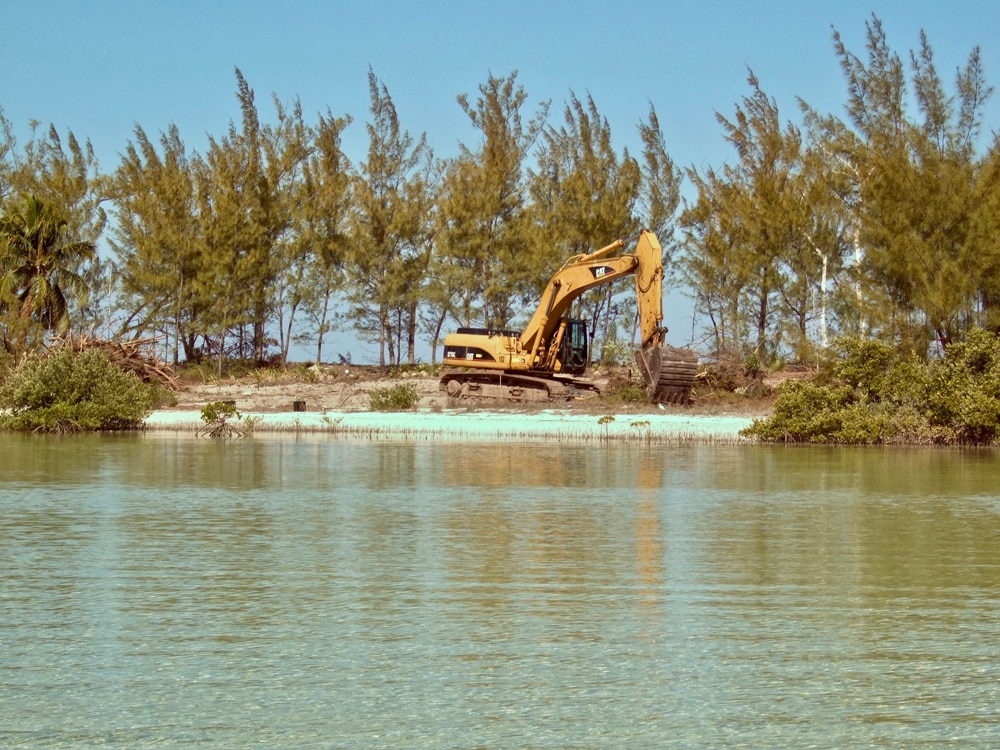Marine Life & Conservation
Marvellous mangroves!
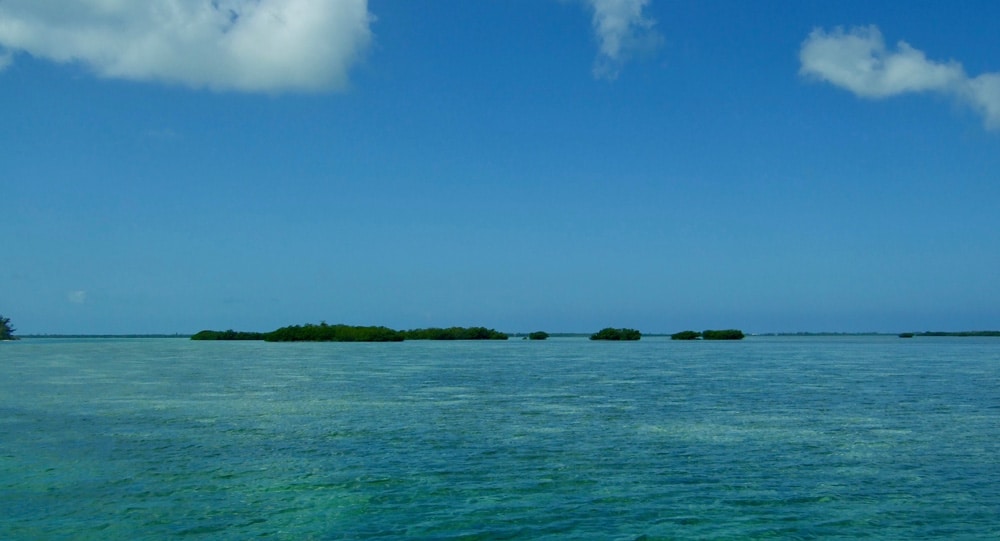
As divers, I’m guessing most of us love diving on coral reefs; if those reefs are pristine and full of life, even better! Coral reefs are incredible and diverse ecosystems, but they are strongly linked and interdependent on three other ecosystems: seagrasses, mangroves and rivers. Here I’m going to discuss mangroves, and why they are one of the most important ecosystems to conserve in order to have beautiful, healthy coral reefs. Hopefully I can convince every diver to love them as much as I do and to explore our options in protecting these habitats. Though historically, mangroves were viewed as insect filled, tangled and muddy swamps and shrub forests, we have become increasingly aware of how diverse and special this amazing habitat is for both wildlife and protecting our shorelines from extreme weather events.
So, what is a mangrove?
Mangroves are trees and shrubs that love very warm, wet conditions and grow in saline coastal habitats in tropics and subtropics. You have probably seen them fringing islands and coastlines when diving on coral reefs. They can often be recognised by their dense tangle of prop root that make the trees look like they are on stilts. Mangroves are unique because they can live in areas with low oxygen soil and where the water has a variable salt content. As they live in the coastal intertidal zone, the roots can cope with being flooded twice a day. They are flowering plants, where the upper trunk, branches and leaves live above the water line and the lower trunk and roots can live below.
There are over 80 different species of mangrove tree and several more species associated with mangroves for their ability to tolerate the coastal intertidal zone, such as buttonwoods. The Asia-Pacific region has the most diversity and the largest mangrove region in the world is The Great Sundarbans in Bangladesh (a UNESCO World Heritage Site). Having said this, there are three main dominant types of mangroves in a mangrove forest; red, black and white.
Red mangroves are evergreen trees that can grow to 25m, often less. They live closest to the water and elaborate arching prop roots and red bark colour make it very easy to identify. They are salt excluders; the roots contain a waxy substance that helps keep the salt out. If any salt does get through, it is deposited in older leaves and the tree sheds them. They produce propagules (seeds) that grow from the tree, then detach and stick into the mud or float away somewhere new.
Black mangroves live between red and white mangroves. The easily identifiable roots (pneumatophores) stick up vertically from sediment and are specially designed to take in oxygen, acting like snorkels in the water. Black mangroves have longer pointed leaves which are often covered in salt crystals and dark scaly bark. They produce seeds which germinate while still connected to the parent tree, so trees are often grouped together.
White mangroves live closest to the land in the back portion of the mangrove swamps, where they are unaffected by tidal inundation, except on spring tides. With no visible aerial roots, they may seem harder to identify, but the leaves have two glands at the base which excrete the salt taken in by the roots, so the leaves are often coated with white salt crystals. The salt crystals give this species its common name and the bark is lighter in colour.
Why should we love them?
Mangroves are ecosystem engineers, meaning they form their own ecosystem and provide habitats for other species, but they also have lots of benefits to us:
- Trapping sediments
Mangrove forests have huge root systems that slow the movement of tidal waters, making the sediment settle out of the water, the roots then trap this soft sediment and build up the muddy bottom. In dense forests, mangroves have created entire islands.
- Reducing wave action
The network of sediment-trapping roots stabilize the coastline, reducing erosion from wave and tidal action and providing a buffer, an important defence for costal ecosystems and communities from tropical storms and their storm surges.
- Important nursery grounds
Mangroves provide an intricate network of nursery habitat for many fish and invertebrate species, which move out to coral reefs and other ecosystems when they mature. The mangroves provide a safe haven for juvenile fish, including commercially important fisheries species, which seek food and shelter from predators. Many shark species, including lemon sharks, bull sharks and blacktip sharks, spend their juvenile years in mangrove forests.
- Rich biodiverse ecosystems
In addition to being a great habitat for the young of reef and pelagic species, mangroves are a primary habitat for mature individuals of many species of marine animal, amphibians, reptiles, seabirds and waterfowl. Mangroves are always teeming with life!
For anyone who enjoys diving on coral reefs, it is important to be aware that coral reefs and mangroves have a symbiotic relationship – the reefs protect the coast from being eroded by the sea, blocking the power of the open ocean and the mangroves trap the sediment washed from the land that would smother and kill the reef. Species depend on both ecosystems for different life stages and both ecosystems provide coastal protection and commercial value through fish stocks and tourism for us. Mangroves are one of the most valuable ecosystems in the world.
Threats
Unfortunately, like coral reefs, mangrove forests are under threat and are being lost at a very rapid rate. Clear cutting for aquaculture, mainly shrimp farming and coastal developments, such as marinas, housing and hotels is a major issue, as is harvesting for wood.
It is estimated that at least one third of all mangrove forests have been lost in the last few decades. Without protection, they may disappear in areas that cannot afford the ecological or economic loss. This in turn negatively effects our beloved coral reefs, which are already struggling with pollution, sedimentation, climate change, ocean acidification, overfishing and destructive commercial practices. After that thoroughly depressing paragraph, lets move onto the positive bit…
What can we do to help?
- Help support and encourage more protected areas. If you are travelling in an area with a protected area, donate or take a guided tour from rangers.
- Make sustainable choices; shrimp farming is a leading cause of mangrove habitat loss, know where your food is coming from and whether you should be making that choice. If you don’t want to give up a food, there is usually a sustainable option – it may cost a little extra, but it will be completely worth it!
- Spread the word! As ever, education is always important and particularly in countries with mangrove forests; many NGO’s work in schools to educate the next generation, which we can support through donations. However it isn’t just about spreading the word in other countries, the more people everywhere learn about the value of mangrove forests, the more drive there will be to protect this amazing habitat!
Visiting the mangroves
So, if you are now totally hooked on marvellous mangroves and want to go and see the wildlife for yourself, there are now many places that will take you snorkelling or on kayak tours. By picking an organisation that donates to mangrove protection or does educational programmes you get to help out while having a great time!
Marine Life & Conservation
Shark Trust launches Oceanic 31 Shark Art Auction

 After a two-year tour of UK art galleries, community spaces and aquariums, the Shark Trust’s acclaimed Oceanic31 exhibition takes its final bow at the Royal Geographical Society later this month. And the unique collection of artwork, depicting 31 species of oceanic sharks and rays, donated by 31 artists, is now open for bids from art lovers and shark enthusiasts. The online auction, launched today, will close on the 7th December at 8pm (BST). The money raised will support the Shark Trust Oceanics Programme.
After a two-year tour of UK art galleries, community spaces and aquariums, the Shark Trust’s acclaimed Oceanic31 exhibition takes its final bow at the Royal Geographical Society later this month. And the unique collection of artwork, depicting 31 species of oceanic sharks and rays, donated by 31 artists, is now open for bids from art lovers and shark enthusiasts. The online auction, launched today, will close on the 7th December at 8pm (BST). The money raised will support the Shark Trust Oceanics Programme.
People can now bid on 27 of the artworks by visiting this website:
https://superstars-auctions.com/sharktrustauction
It is a chance to own a beautiful piece of original art and to support the Shark Trust. The timing of the auction also means that these would make a very special Christmas gift for any shark-lover.
- Bigeye Thresher Shark by Janina Rossiter
- Carcharodon carcharias by Jimmy Higgs
- Croc VR 2030 by Tom Mead
- Oceanic Whitetip by ATM
- Silky Street by ScapaJoe
The diversity of pieces mirrors that of the sharks and rays they represent. You can bid on paintings, digital creations, sculptures, mixed media and more. You can pick your favourite artist or species of shark. Or you can select the perfect artwork to make a statement in your home or office. Whichever you choose, you will be supporting the work to protect these amazing animals.
One of the pieces of art has been selected to be auctioned live by Steve Backshall at the For the Love of Sharks event at the Royal Geographical Society in London on the 29th November. In addition to this, two further pieces will be raffled at this event, giving people a chance to win an incredible piece of shark art. For the Love of Sharks is the Shark Trust’s flagship evening. A night to celebrate sharks. Steve Backshall is the headline speaker at this event that will see other prominent shark advocates join him on stage.
Tickets for the event can be snapped up here:
https://thesharktrust.org.uk/Event/flos24
Those that would like to see the Oceanic 31 exhibition have one final chance. It is being displayed at the Pavilion at the Royal Geographic Society from 26th November until the 7th December. Entry is free.
Find out more here:
https://www.rgs.org/events/upcoming-events/oceanic-31
Paul Cox, Shark Trust CEO, Said “This exhibition has given us the opportunity to reach out to a new audience. And inspire more people with the wonderful sharks and rays on which our Big Shark Pledge campaign is based. We are immensely grateful to the 31 artists who have worked so hard to create these works.”
Bid for your favourite Oceanic 31 artwork here:
https://superstars-auctions.com/sharktrustauction
Banner Image: Smooth Hammerhead by Alicia Hayden
Marine Life & Conservation
Meet Steve Backshall in the Bite-Back Prize Draw

Until 28 November, prizes worth a massive £10,000 – including experiences, products and tuition – feature in a line-up of items that can be won for £5 in an online prize draw to celebrate Bite-Back Shark & Marine Conservation’s 20th anniversary and help generate crucial funds for the future.
Top of the list of prizes is the chance to spend time with adventurer and wildlife expert Steve Backshall, a workout session with Nat Geo star Aldo Kane, a kayaking trip alongside white-water expert and diver Sal Montgomery and a Zoom call with ‘shark whisperer’ Cristina Zenato.
On top of that, some of the most admired companies in the diving and scuba industry have been quick to support the charity with fabulous prizes that make the £5 ticket price worth more than just a flutter.
Master Liveaboards, BSAC, Midlands Diving Chamber, Go Freediving and Blue Shark Snorkel have all generously donated experience prizes, while celebrated photographer Alex Mustard has donated a print and artists Scott Gleed and Olivier Leger have donated a sculpture and illustration to help boost the fundraising pot.
Fourth Element has donated Ocean Positive gear and LA watch company Nodus has gifted the charity a stunning dive watch. For land lovers, the charity has included a five star London hotel stay at Bankside Hotel plus a family visit to Longleat Safari Park in the roster of prizes.
Campaign director for Bite-Back, Graham Buckingham, said: “We’ve been overwhelmed with support from companies and individuals that we truly admire and who have supported us on our 20 year journey and we’re truly grateful to them all. While we feel incredibly proud of our achievements over the past two decades – and we are super excited about the next chapter – this prize draw isn’t a vanity project. It represents a real lifeline to our work and important advancements in the global protection of sharks. So we hope divers, dive clubs and even bargain hunters grab some tickets to make this a massive success.”
The charity hopes that the prize draw will generate crucial funds to launch a brand new, ground-breaking, campaign to enrol the public and increase support for the protection of sharks around the world.
To enter the competition visit www.bite-back.com/prizedraw. The prize winners will be announced on 1 December 2024.
-

 News1 month ago
News1 month agoIconic SS United States to become the World’s Largest Artificial Reef
-

 Blogs3 months ago
Blogs3 months agoNovoScuba’s Game-Changing Approach for Dive Store Owners: WE PAY YOU!
-

 News2 months ago
News2 months agoBook Review – 52 Assignments: Underwater Photography
-

 Marine Life & Conservation3 months ago
Marine Life & Conservation3 months agoBook Review: Sharkpedia
-

 Gear News2 months ago
Gear News2 months agoDYNAMICNORD – New German diving brand enters the British market
-

 News1 month ago
News1 month agoExploring Cenote El Pit: A Diver’s Dream
-

 Gear News2 months ago
Gear News2 months agoTry BARE drysuits (and maybe even win one!) this Friday with Sea & Sea at North West Dive Fest
-

 News2 months ago
News2 months agoComing Soon – 52 Assignments


